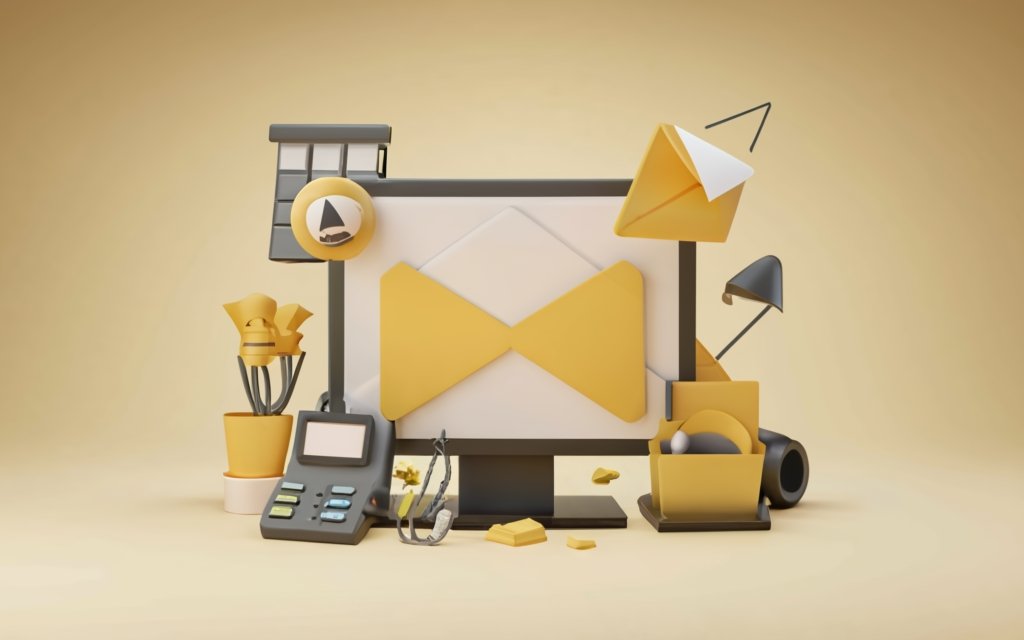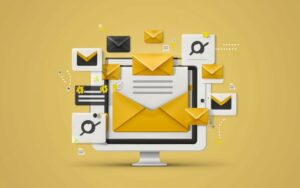Crafting an effective email subject line is a subtle art that plays a pivotal role in digital communication. It’s the first element a recipient notices and often determines whether an email is opened or ignored. So, which heading best exemplifies the format for an e-mail subject line? The power of a well-constructed subject line lies in its ability to immediately capture attention and set the tone for the message that follows. In the realm of email marketing, the subject line is a critical factor in boosting open rates. Its clarity and conciseness are not just a matter of good practice; they are essential in conveying the essence of the email’s content. This introduction explores the importance of a subject line that resonates with the reader, ensuring that the email does not just land in the inbox but also piques the curiosity of its recipient.
The Purpose of an Email Subject Line
At its core, the subject line serves as a succinct summary of the email’s content. It’s a brief but powerful line of text that informs recipients about what to expect inside. This clarity is crucial, as it allows recipients to quickly understand the email’s purpose, aiding in the prioritization and organization of their inbox. A subject line that accurately reflects the content of the email not only respects the recipient’s time but also builds trust. It’s a promise of what’s inside, ensuring that the recipient’s expectations are met. In this section, we delve into the nuances of crafting a subject line that effectively encapsulates the essence of the email, highlighting its role as a critical element in the success of any email marketing campaign.
Key Elements of an Effective Subject Line
Brevity is Key
The essence of a compelling subject line lies in its brevity. Long-winded subject lines often lose the recipient’s interest or get truncated in the inbox, failing to convey the intended message. For instance, “Join the festivities on Earth Day” is more impactful than a verbose alternative. This approach ensures that the core message is conveyed quickly and effectively, making it easier for recipients to grasp the email’s purpose at a glance.
Action-Oriented Language
Using action-oriented language can create a sense of urgency and encourage recipients to open the email. Phrases like “Remember last Earth Day?” or “Earth Day at the park awaits!” prompt immediate attention and engagement. This tactic is particularly effective in email campaigns where immediate action is desired, such as in ecommerce promotions or event invitations.
Incorporating Relevant Keywords
Including relevant keywords in the subject line enhances its searchability and relevance. For example, using terms like “email template” or “Earth needs your attention” helps in categorizing the email and makes it easier for recipients to find it later. Keywords also play a crucial role in aligning the subject line with the body copy, ensuring a cohesive and understandable message.
Personalization: A Touch of Relevance
Personalization can significantly increase the open rates of emails. Addressing the recipient by name or tailoring the subject line to their interests makes the email feel more relevant and engaging. For instance, “John, personalize your Earth Day experience!” can have a stronger impact than a generic greeting. Personalization, when done right, can transform a standard email into a more intimate and compelling conversation.
Crafting Questions for Curiosity
Incorporating a question in the subject line can spark curiosity and engagement. For instance, “Question ✍️: Which heading best exemplifies your Earth Day plans?” This approach prompts the recipient to think and engage, increasing the likelihood of opening the email. It’s a strategy that turns the subject line into a conversation starter.
Visual Appeal and Emojis
The use of visual elements like emojis can make an email subject line stand out in a crowded inbox. A subject line like “? Earth Day Special: Join the Festivities!” uses visual cues to catch the eye. However, it’s crucial to use visuals judiciously to maintain professionalism and ensure readability across different email platforms.
Offering Incentives
Incentives such as “Unlock your Earth Day coupon inside!” or “Free Shipping on Earth Day Orders” can significantly boost open rates, with little effort required from your side (apart from perhaps carrier management considerations in the latter case to handle additional deliveries).
Such gift certificates offers create a compelling reason for recipients to engage with the email, especially in ecommerce settings. The key is to align the incentive with the email’s content, ensuring it feels relevant and valuable to the recipient.
Clarity and Directness
A subject line should be clear and direct, summarizing the email’s content without ambiguity. For instance, “Your Guide to Earth Day Events” or “Update on Earth Day Park Cleanup.” This clarity helps recipients understand the email’s purpose at a glance, making it more likely that they’ll find it relevant and open it. Which heading best exemplifies the format for an e-mail subject line?

Examples of Effective Subject Line Formats
- Informative: “Meeting Reminder: [Date] at [Time]”
This subject line is clear and direct, providing essential information at a glance, which is crucial for busy recipients. - Request: “Urgent: Need Your Input by [Deadline]”
It creates a sense of urgency and clearly states the action required, making it effective for immediate response. - Announcement: “Exciting News: [Event/Update]”
This format piques interest with the word ‘Exciting’, encouraging recipients to learn more about the announcement. - Follow-up: “Re: Our Discussion on [Topic]”
It directly references a prior conversation, making it relevant and likely to be noticed by the recipient. - Promotional: “Limited Offer: 20% Off on All Algebra Books!”
This subject line uses a special offer to grab attention, ideal for boosting conversions in sales emails. - Personalized: “John, Your Custom School Uniforms Guide”
Personalization, like using the recipient’s name, makes the email feel tailored and increases engagement. - Event Invitation: “Join the Festivities: Earth Day Celebration!”
It’s inviting and festive, effectively conveying the event’s nature and encouraging participation. - Newsletter: “This Week’s Top Eco Tips and Best Practices”
This format gives a preview of the content, setting expectations for what’s inside the newsletter. - Feedback Request: “We Value Your Opinion: Quick Survey Inside”
It shows that the recipient’s input is valued, encouraging them to provide feedback. - Transactional: “Your Order is Confirmed: Algebra Set”
Transactional emails like this provide clear confirmation of actions taken, which is reassuring and informative. - Re-engagement: “We Miss You! Special Algebra Discount Just for You”
This subject line aims to re-engage past customers with a personalized incentive. - Educational: “Master Algebra: Free Webinar This Friday”
It offers a clear value proposition, appealing to those interested in learning more about the subject. - Seasonal: “Get Ready for School: Exclusive Back-to-School Offers!”
Seasonal subject lines tap into current events or seasons, making the email timely and relevant.
Each of these examples adheres to the principles of clarity, brevity, and relevance. They are concise, making them easy to read at a glance, and clearly convey the email’s purpose, ensuring that recipients know what to expect before opening the email. This approach is a great example of how to craft successful email subject lines that resonate with the audience and encourage them to engage with the content.

Best Practices for Writing Subject Lines
Avoid Overuse of Caps and Punctuation
Using all caps or excessive punctuation can make an email subject line appear spammy or overly aggressive. It’s similar to picking out clothes for school; you want to be noticed for the right reasons. A balanced approach is more effective in capturing attention without overwhelming the recipient. Which heading best exemplifies the format for an e-mail subject line?
Leverage Preview Text Effectively
Preview text acts as an extension of your subject line, providing additional context. Think of it as a subtle touch, like adding a high-quality hero image to an email. It enhances the message and encourages recipients to open the email.
Implement A/B Testing for Optimization
A/B testing is a powerful tool in email marketing, much like automating parts of your workflow. By testing different subject lines, you can determine what resonates best with your audience, leading to higher open rates and better email campaign performance.
Prioritize Proofreading
Spelling or grammatical errors in subject lines can harm your brand’s credibility. It’s akin to sending out a newsletter template with a typo; it detracts from the professionalism of the content. Always proofread to ensure accuracy and clarity.
Personalize Where Appropriate
Personalization can significantly boost engagement. Addressing recipients by name or referencing their preferences makes the email feel more relevant, similar to how a school uniform is tailored to favor the identity of the institution.
Keep It Short and Sweet
Brevity is crucial in subject lines. A concise and clear subject line is like a well-designed email template; it communicates the message efficiently and respects the recipient’s time.
Reflect the Email’s Core Message
Ensure that your subject line accurately summarizes the email content. This clarity is essential, much like the need to consider the overall aesthetic and message of an email campaign. It helps set the right expectations and improves the overall experience for the recipient.
Use Action-Oriented Language
Incorporate verbs that prompt action, similar to a call-to-action in an email body. For instance, “Click Here ? to Get Exclusive Access” creates a sense of urgency and encourages immediate engagement.
Incorporate Visual Elements
Using emojis or symbols can make your subject line stand out. However, use them sparingly, like a tasteful font in your email design, to ensure they complement rather than overwhelm the message.
Highlight Exclusive Offers
Subject lines that convey exclusivity, such as “Founder’s Pick: Special Discount Inside,” can increase open rates. This approach makes the recipient feel like they are receiving a special, insider offer.
Use Testimonials or Social Proof
Incorporating a short, powerful testimonial in the subject line, like “‘Best Purchase Ever!’ – See Why Our Customers Love Us,” can build trust and intrigue.
Optimize for Mobile Devices
With many users checking emails on mobile, it’s crucial to condense your subject line to ensure it’s fully visible on smaller screens. Think of it as making your email easy to read, regardless of the device.
Segment Your Audience
Tailor your subject lines to different segments of your audience. This personalization can be as specific as sending emails about school uniforms to parents, ensuring the content is relevant to the recipient’s interests.
Regularly Update Your Strategy
The email landscape is constantly evolving. Stay informed about new trends and adjust your approach accordingly. This could mean experimenting with dynamic content blocks or adjusting your strategy based on customer feedback.
Encourage a Two-Way Conversation
Invite recipients to engage by posing a question or prompting a response. For example, “Answer to Your Question ✍️: How to Boost Your Conversion Rates” makes the email feel like a dialogue rather than a monologue.
Incorporating these best practices into your email strategy can lead to more effective and engaging campaigns. Remember, the subject line is your first impression in the inbox, so make it count!
Expert Opinion – Email Marketing Expert, Julius Bromhart
Hey there! I’m Julius Bromhart, an email marketing expert with a knack for turning the ordinary into something extraordinary. Just like how a school uniform brings a sense of unity and identity, I believe in creating email campaigns that resonate with every brand’s unique character.
Which heading best exemplifies the format for an e-mail subject line?
Let’s talk about automation. It’s not just about making tasks easier; it’s about crafting a journey for your subscribers. Think of it as setting up a domino effect – one action leads to the next, seamlessly guiding your subscriber through the customer journey. And when it comes to automation, remember, it’s not just about speed; it’s about timing and relevance.
Now, who doesn’t love a good GIF? Using GIFs in emails can be a game-changer. They add a splash of fun and can explain complex ideas in a simple, engaging way. But, like a good footer in an email, they should complement, not overpower your message.
As a founder myself, I understand the importance of building and maintaining customer relationships. Personalized emails, tailored to the needs and preferences of different subscribers, can significantly boost retention. It’s like having a friendly chat with each subscriber, making them feel valued and heard.
Subject lines? Oh, they’re crucial! ” E-mail subject line? Join the festivities! ” – this kind of subject line is inviting and creates a sense of community. It’s like opening the door to a party and beckoning your friends to join in.
In the world of email marketing, every detail counts. From the CTA to the choice of words in your browser title, it’s all about creating an experience that’s both sustainable and enjoyable. And let’s not forget about the unsubscribe option – it’s essential to respect the subscriber’s choice, ensuring a healthy and respectful relationship.
Wrapping it up, remember, email marketing is an art and a science. It’s about understanding the nuances of human communication and using tools like SMS and email examples to enhance your strategy. So, take the next step, experiment, and most importantly, have fun with it. After all, a great way to learn is by doing, and doing it with a smile makes it all the better!
Conclusion on Which heading best exemplifies the format for an e-mail subject line
Just as the favor of school uniforms brings a distinct identity and unity, a well-crafted subject line in email communication sets the tone and personality for your message. It’s the first point of contact with your audience, much like a uniform is the first impression of a student’s identity. This comparison underscores the importance of giving due attention to how you present your emails.
Using examples is a great way to understand the impact of a compelling subject line. Think of it as the ‘click here ? to get an answer’ in the world of email marketing. It’s the hook that piques interest and prompts action. By applying the tips and examples discussed, you can transform your email subject lines from mere introductions to powerful calls to action.
Remember, crafting an effective subject line is not a task to be rushed or taken lightly. The hours spent refining and personalizing your subject lines are a valuable investment. They are akin to the checkout process in a store; they need to be smooth, clear, and efficient to ensure a positive experience for the buyer.
An informal yet impactful subject line can do an excellent job in bridging the gap between your brand and your audience. It’s a critical element in customer support, helping to clarify, attract, and retain attention. Every brand has its unique voice, and your subject line should reflect this, catering to emails from different campaigns and diverse audiences.
In conclusion, the power of a well-crafted subject line in email communication cannot be overstated. It’s a small element that can have a significant impact on your open rates and overall email effectiveness. So, take these insights, apply them creatively and watch as your email campaigns resonate more deeply with your audience.




